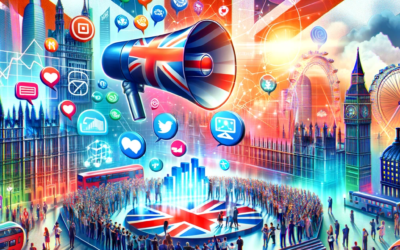In the bustling marketplace of the United States, events serve as significant landmarks for businesses, offering them unparalleled opportunities to engage with their audience, forge meaningful relationships, and showcase their prowess. As brands, big and small, continue to tap into the multifaceted realm of events, the pressing question remains: How do you measure event success? After all, hosting an event is a substantial investment in time, effort, and resources. To ensure the returns are worth the input, it’s imperative to not just rely on anecdotal evidence or gut feelings, but on concrete metrics that offer clear insights.
The U.S. market, with its diverse audience and evolving trends, poses a unique set of challenges. Tracking the right metrics becomes not just a way to validate success but a compass directing future strategies. In this comprehensive guide, we will delve deep into 10 essential metrics that stand as indicators of event success in this dynamic market. By understanding and integrating these metrics, you stand to enhance your event’s impact, boost engagement, and set a benchmark for future endeavors.
1. Ticket Sales and Registration Numbers
Fact: A study showed that 65% of event organizers rate ticket sales as their primary measure of success.
If you’re looking to measure event success, the initial point of focus should be ticket sales and registration numbers. It’s the most straightforward metric, giving you a clear idea of how many people are interested in attending your event. A robust ticket sale indicates a strong demand and resonates with the value proposition of the event.
However, it’s not just about the numbers but also about the rate of sales. An event that sells out in a matter of hours or days is a clear testament to its perceived value in the eyes of the target audience. This rapid sell-out rate can be a result of effective marketing, a compelling lineup, or a sheer brand reputation.
Furthermore, comparing the pre-event forecasted sales with the actual numbers can offer insights. If you’ve surpassed your expectations, kudos! If not, it’s an opportunity to revisit your marketing and outreach strategies. By closely monitoring the patterns of ticket sales, you can make necessary adjustments in real time, ensuring you always remain in tune with the market’s pulse.
Lastly, it’s crucial to consider the source of these registrations. Are they coming from organic searches, paid promotions, referrals, or direct sources? By analyzing this, you’ll understand which channels are most effective for your target audience, allowing for more focused marketing strategies in the future.
2. Sponsorship and Partnership Acquisitions
Fact: Events with sponsors are perceived to have a 50% higher credibility rating among attendees.
In the U.S. market, sponsorships play a pivotal role in adding credibility and financial backing to an event. Acquiring valuable sponsors is a sign that established entities see potential and value in your event, making it an essential metric to track.
But it’s not just about the number of sponsors; it’s also about the quality and relevance. Having a prominent industry leader sponsor your event can significantly boost its prestige. For instance, in the tech world, securing a sponsorship from giants like Apple or Google can elevate the event’s stature manifold.
Moreover, the diversity of sponsors can also indicate the broad appeal of your event. For instance, if your event is about sustainable fashion and you attract sponsors from various sectors – from eco-friendly fabric manufacturers to organic makeup brands – it shows the multidimensional appeal of your event.
It’s essential to maintain a healthy relationship with these sponsors. Regular communication, ensuring their needs are met, and offering them ample visibility during the event can solidify these partnerships for future collaborations. After all, a satisfied sponsor today can be a loyal partner tomorrow, vouching for your event’s success.
3. Attendee Engagement and Satisfaction
Fact: Studies reveal that events with high attendee engagement are 2x more likely to achieve their intended ROI.
Measuring the success of an event isn’t solely about numbers; it’s also about the quality of interaction and experience you offer. Attendee engagement and satisfaction stand as pivotal metrics to gauge the overall impact of your event in the U.S. market.
Engagement can be observed in various forms – the fervor in discussions, the questions raised during sessions, or the networking buzz during breaks. For instance, if you’ve organized an entrepreneurial summit and noticed attendees passionately discussing business ideas, it’s a sign of a successful engagement. Similarly, if workshop leaders commend the inquisitiveness and active participation of attendees, you’re on the right track.
Satisfaction, on the other hand, is a more subjective metric. Post-event surveys and direct feedback are invaluable tools to measure this. When attendees state they’ve gained meaningful insights, made valuable connections, or simply had an enjoyable time, it showcases the event’s success in meeting its objectives.
A word of advice: Always act on feedback. Even if you’ve nailed the event in many areas, there will always be room for improvement. Taking feedback seriously and implementing changes in future events not only improves the experience for attendees but also showcases your commitment to excellence.
Lastly, remember, that a satisfied attendee is your best ambassador. They not only return for subsequent editions but also spread the word, ensuring a wider reach and more significant impact in future events.
4. Social Media Activity and Reach
Fact: Over 85% of marketers consider social media to be an essential tool for event promotion and engagement.
In this digital age, the buzz created on social media platforms serves as a real-time barometer for your event’s success. The U.S. audience is significantly active on social media, making it imperative for you to monitor activity and reach related to your event.
Start by tracking the volume of mentions and hashtags associated with your event. A surge in mentions or a trending hashtag showcases the traction your event is gaining. But, it’s not just about quantity; the quality of these mentions is equally vital. Positive testimonials, shares of key event moments, or even influential figures talking about your event can magnify its impact manifold.
Moreover, live-tweeting sessions, Instagram stories, or Facebook Live streams can further amplify the event’s reach. Engaging with attendees in real-time on these platforms, addressing queries, or simply thanking them for their participation fosters a sense of community.
Additionally, the post-event phase is just as crucial. Encourage attendees to share their experiences, photos, or learnings. Engage with their posts, respond to comments, and continue the dialogue. This sustained engagement ensures that the momentum of your event is carried forward, building anticipation for future editions.
In essence, a robust social media presence and activity not only enhance your event’s reach but also serve as a testament to its resonance with the audience, making it a vital metric to measure event success.
5. Conversion Rates for Calls-to-Action
Fact: A survey indicated that 72% of businesses believe that improving conversion rates is crucial for their event’s overall success.
Every event has underlying objectives, be it selling a product, gaining sign-ups for a course, or simply promoting a brand message. Calls-to-action (CTAs) embedded within your event aim to achieve these objectives. Thus, tracking the conversion rates of these CTAs becomes pivotal to measuring event success.
For instance, if you’re launching a new software solution during a tech summit, and you have a CTA prompting attendees to sign up for a demo, the conversion rate of this CTA will offer insights into the software’s appeal and the event’s effectiveness in promoting it.
However, it’s essential to ensure that CTAs are not intrusive. They should seamlessly blend with the event’s flow, offering value to attendees. For example, if you’re hosting a literary fest, a CTA offering an exclusive book discount for attendees can be more appealing than a generic sales pitch.
Regularly monitoring the conversion rates allows for real-time adjustments. If a particular CTA isn’t performing as expected, you can tweak its positioning, messaging, or offer. This proactive approach ensures you’re always aligned with attendee expectations, maximizing conversions.
In a nutshell, CTAs serve as a direct link between the event’s objectives and its outcomes. A high conversion rate indicates a successful alignment of these two, showcasing the event’s efficacy in driving desired actions.

6. Session Attendance and Workshop Popularity
Fact: According to event organizers, over 70% believe that the popularity of individual sessions and workshops significantly influences an attendee’s overall event experience.
In the realm of events, especially those with multiple sessions or workshops, tracking the attendance and popularity of each can provide a wealth of insights. This metric is not just a testament to the appeal of the topic but also to the speakers or facilitators helming these sessions.
A session that sees an overflowing audience indicates a high level of interest in that particular topic or the speaker’s draw. For example, in a digital marketing conference, if a session on ‘Content Marketing Strategies’ is packed while others have moderate attendance, it signals the current trend and interest in content marketing within the U.S. market.
However, it’s not just about numbers. The interaction, questions, and overall engagement during these sessions further validate their success. A workshop where attendees are hands-on, asking queries, and actively participating showcases its effectiveness in imparting knowledge or skills.
It’s also essential to understand the reasons behind low attendance or engagement in certain sessions. Was it a scheduling conflict? Was the topic not adequately promoted? Or was it too niche for the broader audience? Analyzing these aspects helps in refining the agenda for future events.
In summary, by closely monitoring session attendance and workshop popularity, you not only gauge the pulse of the audience but also gather critical insights to fine-tune and tailor future event content, ensuring consistent success.
7. Feedback and Survey Responses
Fact: Over 80% of event planners rely on post-event feedback and surveys to improve and optimize future events.
Feedback, often considered the goldmine for event organizers, plays a paramount role in measuring success. While on-the-spot reactions and engagement levels offer immediate insights, post-event feedback, and surveys provide a comprehensive understanding of the attendee’s experience.
Surveys should be designed to cover all facets of the event – from the relevance of sessions, quality of speakers, and logistical arrangements, to the overall ambiance. A high satisfaction rate across these parameters underscores the event’s success in meeting attendee expectations.
However, constructive criticism and suggestions are equally valuable. They highlight areas of improvement, helping you elevate the attendee experience in subsequent editions. For instance, if attendees felt that networking opportunities were limited, you could introduce structured networking sessions or tools in the future.
Remember, the key is to act on this feedback. When attendees see their suggestions being implemented, it fosters a sense of belonging and trust, ensuring their loyalty and participation in future events.
In essence, while immediate metrics like ticket sales or social media buzz offer a snapshot of success, feedback and survey responses provide a holistic view, helping you understand, adapt, and consistently deliver events that resonate deeply with the audience.
8. Event Website Traffic and User Behavior
Fact: Research indicates that 90% of attendees visit an event’s website before deciding to register or buy tickets.
An event’s website serves as its digital storefront, offering potential attendees a glimpse of what to expect. Thus, monitoring the traffic and user behavior on this website becomes crucial to measuring event success and gauging interest levels.
A surge in website visits, especially during the promotion phase, indicates effective marketing efforts and a growing curiosity about the event. Tools like Google Analytics can offer a granular view of this traffic – from the source of the visitors (organic search, social media, referral) to the demographics of these visitors.
However, it’s not just about the number of visits; it’s also about user behavior. Metrics like the average duration of a visit, pages per session, and bounce rate can provide insights into the content’s appeal and relevance. For example, if potential attendees are spending a significant amount of time on the ‘Speakers’ page, it indicates the draw and appeal of your speaker lineup.
Furthermore, tracking conversions from the website – be it ticket purchases, newsletter sign-ups, or session registrations – can give a direct measure of the website’s effectiveness in driving desired actions.
In conclusion, while the on-ground event is where the magic happens, the event website is where the journey begins for many attendees. Ensuring it effectively captures interest and drives actions is pivotal for the overall success of your event in the U.S. market.
9. Revenue and ROI (Return on Investment)
Fact: According to industry experts, over 75% of event organizers rank ROI as the most critical metric for evaluating an event’s success.
Every event, irrespective of its nature, incurs expenses. Whether it’s a lavish corporate gala or a modest workshop, there’s always an investment involved. Hence, understanding the revenue generated in relation to this investment, and computing the ROI, stands paramount in assessing the event’s success.
The direct revenue from ticket sales, sponsorships, or merchandise is a straightforward metric. However, measuring ROI delves deeper. ROI is calculated by taking the net profit of the event and dividing it by the total costs, then multiplying the result by 100 to get a percentage. A positive ROI indicates that the event was financially successful, whereas a negative ROI suggests the opposite.
Beyond the numbers, the qualitative aspects of ROI are equally important. For example, a business might host an event primarily for brand visibility and not direct sales. In such cases, the ROI could be gauged in terms of brand recall, audience engagement, or potential leads generated for future conversions.
However, it’s crucial to set clear ROI expectations before the event. Knowing what success looks like – be it in terms of financial gains, brand visibility, or customer engagement – helps in effectively measuring the outcomes against these set benchmarks.
In essence, while revenue provides an immediate snapshot of the financial success, ROI offers a more comprehensive view, ensuring you understand the true value and impact of your event in the U.S. market.
10. Post-Event Sales and Follow-Up Activities
Fact: Studies show that events with an effective post-event strategy witness a 60% higher engagement and conversion rate in the subsequent months.
The buzz of an event might wane once the curtains are drawn, but the opportunities it presents continue to thrive. Post-event sales and follow-up activities serve as crucial metrics to measure the long-term success and impact of your event.
Tracking sales generated from leads acquired during the event can offer insights into its effectiveness in driving conversions. For instance, if you launch a product at an expo and see a spike in sales in the subsequent weeks, it showcases the event’s success in product promotion.
But sales are just the tip of the iceberg. The real treasure lies in the relationships cultivated during the event. Regular follow-ups with attendees, be it through newsletters, exclusive offers, or webinars, can foster these relationships, turning one-time attendees into loyal patrons.
Furthermore, post-event webinars or workshops can not only serve as follow-up activities but also as platforms to address queries or delve deeper into topics discussed during the event. Such initiatives amplify the event’s value proposition, ensuring sustained engagement.
In summary, while the event serves as the stage, the post-event activities are where the actual relationships are nurtured and cultivated. Ensuring a robust strategy for the same guarantees that the momentum of the event is carried forward, translating into tangible results in the U.S. market.
In today’s dynamic U.S. market, events serve as powerful tools to connect, engage, and convert. However, their success isn’t just about the grandeur or the guest list; it’s about the tangible and intangible outcomes they drive. By closely monitoring the metrics discussed above, from attendee engagement to ROI, you can not only measure event success but also continuously refine your strategy, ensuring your events always resonate deeply with your audience. Remember, in the world of events, success isn’t a destination; it’s an ongoing journey of learning, adapting, and delivering unmatched value.
We welcome any suggestions or questions. You can email us or contact us using the contact page.
You can also connect with us on the following social networks:









0 Comments